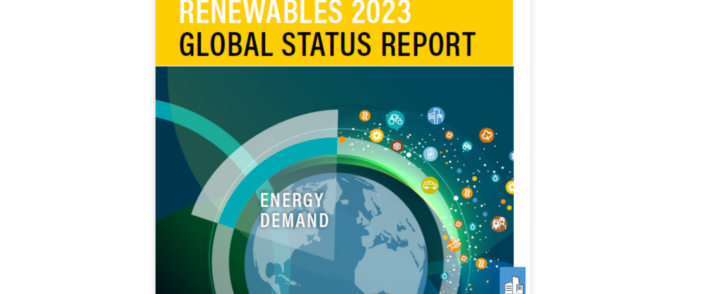2023 Global Renewable Energy Status Report
The Global Renewable Energy Network REN21 recently released its “2023 Global Renewable Energy Status Report” (GSR) in Paris, indicating that in the face of multiple global crises, renewable energy is attracting the attention of the world. In the face of worsening climate change and inflation caused by the Energy crisis, the use of renewable energy as a reliable and low-cost energy is growing.
The 2023 Global Renewable Energy Status Report includes four new modules that explore trends and opportunities for renewable energy deployment in construction, industry, transportation, and agriculture around the world. Among them:
——The four end use sectors are increasing the use of renewable energy to cope with the worldwide Energy crisis.
——-The soaring prices of fossil fuels and the risk of energy shortages – coupled with stronger climate commitments, targeted policy frameworks, and recent technological developments – are the main driving forces for increasing the use of renewable energy in these sectors, especially wind and solar.
——However, renewable energy still faces obstacles as they cannot compete fairly with heavily subsidized fossil fuels.
According to the GSR 2023 Demand Modules, renewable energy has proven its value as a flexible, reliable, stable, and affordable energy source in all demand sectors, and they have successfully responded to the complex crises currently plaguing the world.
These modules explore the growth of renewable energy demand in all four major energy consumption sectors – construction, industry, transportation, and agriculture – and are the first of a total of eight modules in the 2023 Global Renewable Energy Status Report series. The upcoming modules will focus on renewable energy in energy supply, renewable energy systems and infrastructure, as well as the creation of economic and social value from renewable energy, as well as a global overview. All of these modules will be released before June 2023.
The report shows that rising energy prices and various commitments aimed at addressing the Climate crisis have directly affected the rising but different demand for renewable energy in construction, industrial activities, transportation and agriculture. Driven by the Energy crisis, the strong impact of price increases on all end users has triggered key policy options aimed at dealing with market chaos and accelerating the production, use and local manufacturing growth of renewable energy.
This is a typical story of turning challenges into opportunities, “said Rana Adib, executive director of REN21, The multiple crises have made policy makers and leaders of major energy consuming sectors aware of the benefits of renewable energy as a local energy source, ensuring supply security and cost stability. This is what we have been saying for decades, and unfortunately, the world needs a crisis to ultimately shift towards renewable energy to operate industry, construction, transportation, and agriculture – a crisis that has plunged households into poverty in many places, forcing workers The factory reduced production and slowed down economic growth. “
In 2022, several key policy packages promoted the demand for renewable energy in the end-use sector: the United States announced a $500 billion inflation reduction bill, providing new spending, tax breaks, and incentives for energy demand sectors; The European Commission has proposed the REPowerEU plan; India has launched a comprehensive renewable hydrogen energy plan that directly targets heavy industry and transportation.
Source: CWEA



